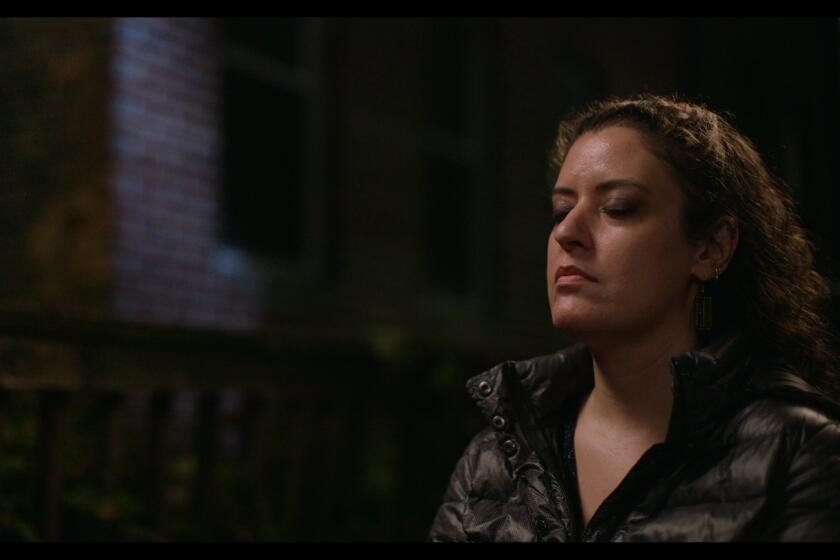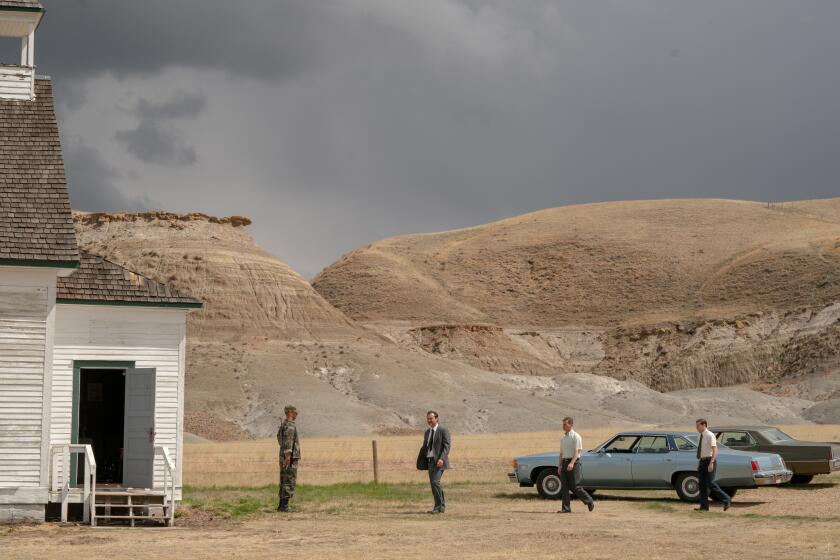Review: ‘Switch’ sticks to energy details
There is a kind of clarity that an academic mind can bring to a complex subject like the energy crisis; there is a kind of information overload that a scholarly approach can produce as well. The new documentary “Switch” has a bit of both as it examines the many raw and refined materials that fuel our lives.
Dr. Scott Tinker, a geologist and associate dean for geosciences research at the University of Texas in Austin, is the film’s central figure and one of its producers and writers. Energy is a subject he’s spent a lifetime analyzing, first in the oil and gas industry and then as an educator. That history shapes the film’s approach as Tinker sets about untangling our energy issues one resource at a time — parsing through coal, oil, electricity, nuclear, solar, wind, biofuels and beyond — by going directly to the source of each. Essentially we’re invited along on a global road trip as Tinker interviews the people who run each industry and makes general assessments of its relative benefits and eco-impact.
Directed and co-written by Harry Lynch, “Switch” functions as more of an educational tool than an agenda setter. But in trying to be agenda-free — you’d be hard-pressed to say which energy source Tinker favors — the film ends up lacking any real passion, which is the most fundamental fuel that drives the best issue-based documentaries. We want something to root for or rail against and “Switch” gives us neither.
THE ENVELOPE: Latest awards news
The film does manage an admirable job of making the abstract concrete. It’s one thing to listen to the debates on various coal-extraction techniques. It’s another to see the result.
To compare apples to oranges, or more specifically — oil to solar, nuclear to wind — Tinker has come up with a formula to determine how many people can be powered by each source for a year. The starting point for the calculation is the amount of energy the average person consumes annually, which he estimates to be about 20 million watts, a figure derived from a complex matrix of factors.
Then he lets us see exactly what the energy source looks like in action. For the adventurous geologist, it involves everything from climbing up the narrow central cylinder of a modern-day windmill to training for an emergency escape from a submerged helicopter ahead of his trip to a remote offshore oil platform — neither of which is nearly as exciting to witness as it might sound, though Tinker seems to be having a grand time.
Despite the theatrics, there is something thought-provoking in seeing the places and the numbers — it creates a kind of cost-benefit interplay in your mind. For example, there’s a stop at the Belle Ayr Coal Mine in Wyoming, the country’s biggest coal producer, which powers roughly 3 million people a year. The vast fields of mined coal look like an endless desert of black sand with no life form other than the guys driving huge trucks that look Tonka toy-sized against the landscape.
BUZZMETER: 2013 race to the Oscars
In contrast, the cleaner, eco-friendly wind power system in Denmark can cover the energy needs of just 340,000 people, a solar tower in Spain another 1,200. It seems as though one can never overtake, much less replace, the other. Is this a subtle suggestion to compromise? Who knows?
The experts don’t seem to, although the film is packed with them. Take the Shell executive discussing the production process and safety record of the Perdido Offshore Platform in the Gulf of Mexico. Although Perdido has avoided any BP-like disasters, the possibility of an accident can never be completely eliminated. Nor can it at the Comanche Peak Nuclear Power Plant in Texas. It does serve to set up the conundrum: What are we willing to risk to keep our lives comfortably powered and how much are we willing to pay for it?
“Switch” begins to sketch out a framework for thinking about the trade-offs and compromises that seem inevitable to meet the growing need. But the film doesn’t attempt any real answers. Nor does it delve deeply into Tinker’s own “energy security” plan of cherry-picking across the spectrum of resources. Perhaps “Switch’s” greatest strength is in giving us enough information to try to come up with better questions of our own.
--
‘Switch’
Not Rated
Running time: 1 hour, 38 minutes
Playing: At Laemmle NoHo 7, North Hollywood
PHOTOS AND MORE:
VIDEO: A guide to upcoming movies
The Envelope: Awards Insider
PHOTOS: NC-17 movies: Ratings explained
More to Read
Only good movies
Get the Indie Focus newsletter, Mark Olsen's weekly guide to the world of cinema.
You may occasionally receive promotional content from the Los Angeles Times.











